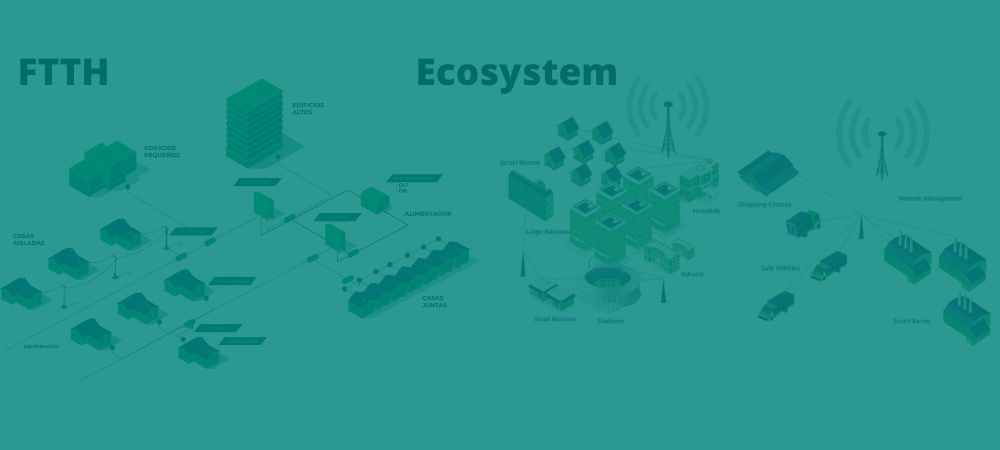By Abril Mejías and Manuela Ramírez
Support Services America at GSB
 What to do if you run out of space on your hard drive or external memory and need to save another file? Is it possible for you and your colleagues to view and edit the same file and see the changes reflected in real time? These and other utilities are offered by storage services in “the cloud”, which thanks to online servers allow you to save and share files without taking up space on your computer, just by having access to the Internet.
What to do if you run out of space on your hard drive or external memory and need to save another file? Is it possible for you and your colleagues to view and edit the same file and see the changes reflected in real time? These and other utilities are offered by storage services in “the cloud”, which thanks to online servers allow you to save and share files without taking up space on your computer, just by having access to the Internet.
OneDrive is just one of them and perhaps its greatest advantage, especially in the work environment, is that you can synchronize folders with Windows Explorer, so that you don’t have to enter the browser every time you want to modify or consult a file. Of course, other people can do the same and access the same documents as you from their computer. That said: editing a file by two or more people at the same time is still impossible at least from this mode, if you try it you will get a warning that “there is a conflicting copy” and you will have to wait for your partner to finish editing, close the file and the changes will be reflected in a few seconds.
OneDrive was created by Microsoft and released to the public on February 18, 2014. Before OneDrive as we know it now, a first prototype was launched in 2007 and its use became popular under the name SkyDrive, which offered 250 MB for storing documents, images and music. By May 2008 it was already in use in 62 countries, so Microsoft had to expand its offer to 5 and then 25 GB of storage. It also offered plans of up to 250 GB, but as of 2016 it was standardized to 50 GB free for any user.
But why do we want more and more space? We could consider two reasons: first, technological advances, if you think about it, a video recorded with a last generation smartphone does not weigh the same as one recorded with one of the first cell phones with camera. File editing software also gets more and more modifications over time, adding new features and causing the resulting files to take up more space.
Not only that, but online operations are increasingly supported by cloud storage services rather than conventional data processing centers. In fact, since 2017, analysts from Cisco estimated that by this 2020, 90% of IT operations would be carried out in the cloud; this includes banking operations, e-commerce, social networks and streaming services.
Interestingly, many of the users who occupy the cloud don’t even know what it is. A survey revealed by Citrix shows that “When people were asked for a specific answer as to what the cloud is, 29% responded that it is something related to the sky or clouds. Only 16% talked about concepts related to networking, remote storage and access from connected devices. The collection of concepts associated with the cloud includes smoke, pillows, toilet paper, outer space, money, mysterious networks, drugs, paradise, sadness, or “a hacker’s dream.”””
[1]
. Undoubtedly a technology that has invaded us without us realizing it.
Sure, space on computer hard drives and smartphone memory is also getting bigger and bigger, as are the external drives and memory sticks you can get, but will it ever be enough? Here comes the second reason: the desire to store everything or the “fear” of deleting files. Has it ever happened to you that your memory is about to fill up but you have so many files that you don’t know where to start? Or are you about to delete some but think twice knowing that you won’t be able to get them back? Especially in the workplace, where old files become the “history” of the company.
Technology has facilitated a massive creation and downloading of content, whether documents, photos, videos or even music that, regardless of their quality or usefulness, simply do not make you want to delete them. It causes more peace of mind to know that the cloud exists and that it is not necessary to do so, that the cloud can technically be infinite as long as the companies that offer it are willing to keep expanding the available space and users are willing to pay for it.
Sources
-
M. (2018-07-11). History of the cloud: what it is and how it all started. Holded. Retrieved from
https://www.holded.com/es/blog/historia-de-la-nube/
-
Lluis Micó, Josep. (2017-05-04). By 2020 each Internet user will store 1.7 gigabytes in the cloud per month. La Vanguardia. Retrieved from
https://www.lavanguardia.com/tecnologia/20170504/422277704864/almacenamiento-en-la-nube-cloud-datos-aumenta.html
-
EC Editorial Staff. (2015-10-29). Use of data in the cloud will quadruple in 2019. El Comercio. Retrieved from
https://elcomercio.pe/tecnologia/actualidad/datos-nube-cuadruplicara-2019-388579
-
(2012-09-03). 95% Of People Who Use Cloud Services Don’t Know What Cloud Computing Is. Cloud Computing Magazine. Retrieved from
https://www.revistacloudcomputing.com/2012/09/el-95-de-las-personas-que-utiliza-servicios-en-la-nube-no-sabe-lo-que-es-cloud-computing/
-
(2018-12-25). OneDrive. Retrieved from
https://es.wikipedia.org/wiki/OneDrive




